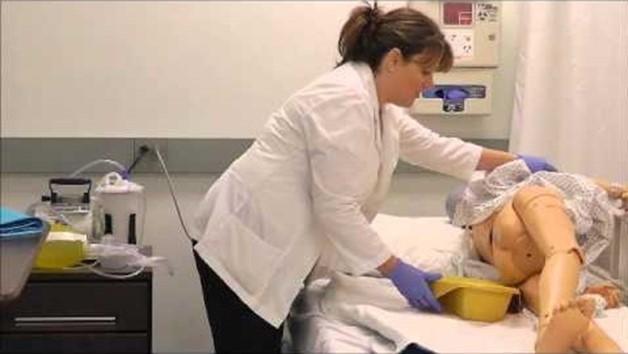A nurse is documenting a dressing change for a client who has a pressure injury. Which of the following entries by the nurse demonstrates correct documentation?
"No changes noted to the wound from previous nursing notes.".
"New dressing applied as prescribed; no drainage on old dressing.".
"The wound seems clean and does not appear to be infected.".
"Client premedicated with MSO4 subq prior to dressing change.".
The Correct Answer is B
The nurse’s entry “New dressing applied as prescribed; no drainage on old dressing” demonstrates correct documentation because it includes specific details about the wound and the dressing change.
Choice A is wrong because it does not provide specific details about the wound or the dressing change.
Choice C is wrong because it includes subjective language (“seems” and “does not appear”) rather than objective observations.
Choice D is wrong because it only documents medication administration and does not provide any information about the wound or the dressing change.
Nursing Test Bank
Naxlex Comprehensive Predictor Exams
Related Questions
Correct Answer is A
Explanation
This statement indicates that the nurse should properly position the fracture bedpan to facilitate its use.
The shallow end of the fracture bedpan should be placed under the client’s buttocks to provide support and comfort.

Choice B is wrong because hyperextending the client’s back can cause discomfort and may not facilitate the use of the fracture bedpan.
Choice C is wrong because it is not necessary for the client to try to defecate for 20 minutes while on the fracture bedpan.
Choice D is wrong because keeping the bed flat may not provide the most comfortable position for the client while using the fracture bedpan.
Correct Answer is A
Explanation
To calculate the dose of gentamicin to administer to a client who weighs 220 Ib, first convert the client’s weight from pounds to kilograms.
220 Ib is equivalent to 100 kg (220 Ib /.2 Ib/kg = 100 kg).
Then, multiply the client’s weight in kilograms by the dose of gentamicin per kilogram: 100 kg * 2 mg/kg = 200 mg.
Therefore, the nurse should administer 200 mg of gentamicin.
Choice B is wrong because 180 mg is not the correct dose.
Choice C is wrong because 400 mg is not the correct dose.
Choice D is wrong because 440 mg is not the correct dose.
Whether you are a student looking to ace your exams or a practicing nurse seeking to enhance your expertise , our nursing education contents will empower you with the confidence and competence to make a difference in the lives of patients and become a respected leader in the healthcare field.
Visit Naxlex, invest in your future and unlock endless possibilities with our unparalleled nursing education contents today
Report Wrong Answer on the Current Question
Do you disagree with the answer? If yes, what is your expected answer? Explain.
Kindly be descriptive with the issue you are facing.
